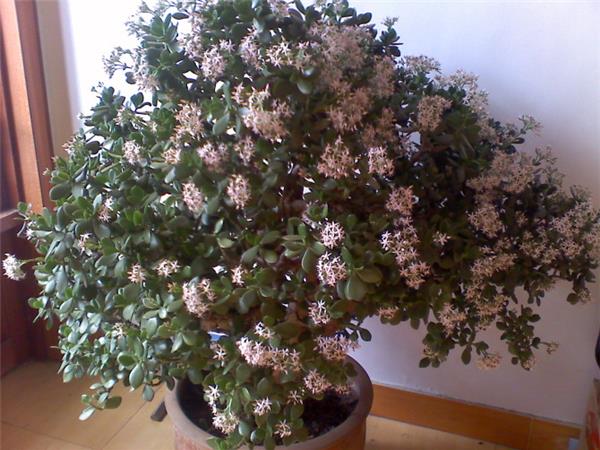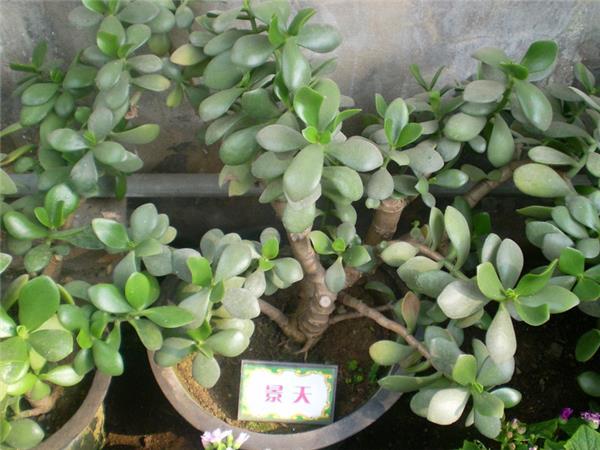Ten points for attention in the cultivation of Sedum crassulata
Sedum is relatively easy to breed, because it has a relatively strong vitality, soil, water and other requirements are not high, but also can be regarded as a "lazy plant".

1. Soil: sedum trees have low requirements for soil, so it is appropriate to choose rotten leaf soil of 2 to 3 and garden soil of 1 to 3 and add a small amount of river sand as culture soil, and a little long-acting fertilizer such as hooves can be put at the bottom of the basin as base fertilizer. In order to facilitate drainage, the bottom of the basin should also be covered with some gravel or tiles.
2. Watering: sedum trees have strong drought tolerance and can grow under dry conditions, and their roots are afraid of water stains. If there is water in the flowerpot, or if it is watered too frequently, it will easily cause rotten roots, so mastering water is the key to culture.
3. Sunshine: when you keep it in the semi-shade in summer, or give it 50% shade, the leaf color will be more beautiful. In spring and autumn, because the temperature is not very high, it is necessary to give it direct sunlight to facilitate its photosynthesis to accumulate nutrients. In winter, keep it indoors where there is bright light for maintenance. Usually put in the indoor maintenance, should be placed in the southeast near the doors and windows, in order to receive light, and every month or one and a half months, to move to the outdoor maintenance for two months, otherwise the leaves grow thin, yellow, new branches or petioles slender, elongated internodes, in a state of overgrowth.

4. Temperature: the optimum growth temperature of Sedum crassulata is 15 ℃ ~ 32 ℃. It is afraid of high temperature and muggy heat, and goes into dormancy when the summer temperature is above 33 ℃. Avoid cold frost, the overwintering temperature needs to be kept above 10 ℃, and when the winter temperature drops below 7 ℃, it will also enter a dormant state. If the ambient temperature is close to 4 ℃, it will die of frostbite.
5. Fertilization: Sedum trees grow faster and should not be fertilized too much, otherwise, the branches and leaves will grow too much, which will affect the tree shape and reduce the ornamental value. In the growing season, only 2-3 times of thin fertilizer and water is enough, but no fertilizer can be applied in winter.
6. Insect pests: mainly to control anthracnose and leaf spot disease, spraying with 1000 times of methyl topiramate wettable powder at the initial stage of occurrence. When indoor ventilation is poor, stems and leaves are vulnerable to shell insects, which are sprayed with 1000 times omethoate EC when they occur. When watering too much, it is easy to cause root rot, leaves will turn yellow, and even gray mildew spots will rot. Attention should be paid to ventilation and drainage, and carbendazim wettable powder can be sprayed to prevent and cure it if necessary. In addition, there can also be pink scale damage leaves, the formation of white wax powder, should be timely elimination of diseases and insect pests leaves to prevent spread.
7. Pruning: when the sedum tree grows too high, it is pruned or coring, the shape of the plant is depressed, and the top branches cut off are used for cuttings and propagation.

8. Propagation: sedum trees are often propagated by cutting. Cuttage propagation can be carried out all the year round, but it is suitable for spring and autumn, which can take root quickly and have a high survival rate. Generally, the side branches with leaves are selected from the Sedum crassulata with good growth potential and many lateral branches, the cuttings are 8 to 12 meters long, and they are placed in a cool and ventilated place to dry for 1 to 2 days, so that the incision is slightly dry, and then inserted into the breeding sand bed; the leaves of the main stem can also be removed, and after the incision is slightly dried, it is inserted into the sand bed to keep 20: 25 ℃ and suitable humidity to take root in about half a month.
9. Overwintering: after entering the winter, the sedum tree should be moved to an indoor insulation that can maintain 7 ℃ to 10 ℃. In warmer days, Yushu can be moved to the balcony at noon to bask in the sun, and the night still moves indoors. In winter, the basin soil is mainly slightly dry, and timely spray fine mist to replenish water. In general, there is no need to directly water the basin soil. It can also be moved into the greenhouse to keep warm. Conditional pots can be moved into the greenhouse, no conditions can also be used plastic film cover, but need to pay attention to the humidity in the cover, found that the water is too wet, it is necessary to remove the cover and breathe in time to prevent rotten leaves.
10, toxicity: Sedum sap is toxic, do not let children eat juice, otherwise it will cause skin redness, swelling, pain, blistering, if inadvertently splashed into the eyes can cause blindness. Of course, you will be fine as long as you don't hurt the swallow's palm and cause it to flow out of juice, or even if it flows out of juice to avoid contact.

The ten items mentioned above are the matters that need to be paid attention to in the process of cultivating sedum trees. In particular, I would like to remind you that protective measures should be taken in the process of growing flowers to prevent children from accidentally eating their juices and causing harm.
- Prev

What is the culture method of the five-pointed star flower?
What is the culture method of the five-pointed star flower?
- Next

[Platycodon grandiflorum planting technique] Ten points for attention in Platycodon grandiflorum Culture
[Platycodon grandiflorum planting technique] Ten points for attention in Platycodon grandiflorum Culture
Related
- Wuhan Hospital Iron Tree Blooming Result Was Instantly Frightened by the Gardener Master
- Which variety of camellia is the most fragrant and best? Which one do you like best?
- What is the small blue coat, the breeding methods and matters needing attention of the succulent plant
- Dormancy time and maintenance management of succulent plants during dormancy
- Minas succulent how to raise, Minas succulent plant pictures
- What are the varieties of winter succulent plants
- How to raise succulent plants in twelve rolls? let's take a look at some experience of breeding twelve rolls.
- Attention should be paid to water control for succulent plants during dormant period (winter and summer)
- Watering experience of twelve rolls of succulent plants
- Techniques for fertilizing succulent plants. An article will let you know how to fertilize succulent plants.

